

PURIFICATION AND ITS PROCESSES
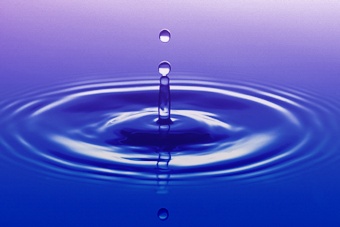 Water purification consists in decontaminating it to such a degree that it is apt for human consumption, in accord
with international standards related to public health.
Water purification consists in decontaminating it to such a degree that it is apt for human consumption, in accord
with international standards related to public health.
The procedure to be applied depends on the characteristics of the water that is to be treated, as well as other
surrounding factors. The origin of the water's pollution can be organic, inorganic or even of both types
simultaneously, and it is frequently accompanied by microbial contamination.
At Sucrocentro we confront these cases with appropriate physical-chemical methods, guiding each process through the most efficient
treatment sequence: first and foremost eliminating organic contamination, followed by mineral/inorganic contamination and finally
the microbial pollution (depending of its existence). For the first two types of pollution, insoluble substances are separated
and afterwards the soluble substances are eliminated. The resulting water effluent exceeds required quality parameters
at an international level.
We have obtained ample recognition in El Salvador for our water purification processes, granted by
entities such as our Patents and Trademarks Office (CNR), the Salvadorean Association of Chemical Engineers (ASINQUI) and
the Foundation for the Development of Science and Technology (FUDECIT).
We have experience solving cases of mineral contamination such as iron and manganese, amongst others;
organic contamination (wells, open air reservoirs, lakes, and rivers that carry sediments);
as well as microbial contamination (coliforms, salmonella, and others).
HIDROPUR-SED ORGANIC
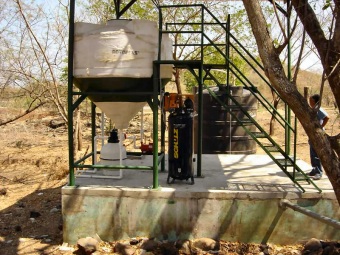 The water in rivers, lakes, and other superficial aqueous bodies naturally
contains organic contamination, especially on the rainy season. It is mainly composed
by plant remains and animal waste undergoing putrefaction (including fecal matter)
as well as soils of various types. It exists both in soluble and insoluble forms, and
it is normally accompanied by microbial contamination.
The water in rivers, lakes, and other superficial aqueous bodies naturally
contains organic contamination, especially on the rainy season. It is mainly composed
by plant remains and animal waste undergoing putrefaction (including fecal matter)
as well as soils of various types. It exists both in soluble and insoluble forms, and
it is normally accompanied by microbial contamination.
The HidroPur SED System is a treatment procedure which utilizes a combination of chemical
substances to eliminate both soluble and insoluble organic contamination simultaneously.
The greatest advantage of this procedure is its simplicity, since it minimizes or completely avoids the need
for complex technologies that may lead to high costs (energy, maintenance, etc) and
complex logistics. A HidroPur SED System is highly scalable, and its installation and operation are very
simple, since it can:
- be installed in remote areas of difficult access
- be operated effectively by a person without formal instruction
- function with or without and energy supply
- function with or without the help of complex/automatic equipment
- function for long periods of time without maintenance
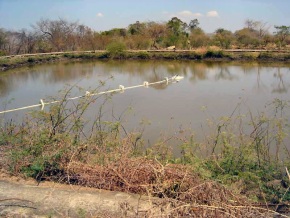 Sucrocentro supplies the substances utilized in the process, or it can provide, under a contractual
license, the authorization for its production and exclusive use by a client. These substances are innocuous
and do not require specialized storage or handling. They also have a very low cost.
Sucrocentro supplies the substances utilized in the process, or it can provide, under a contractual
license, the authorization for its production and exclusive use by a client. These substances are innocuous
and do not require specialized storage or handling. They also have a very low cost.
The following links lead to videos of the HidroPur SED System being applied as an appropriate technology
for individual or family use, and as a larger plant for communal use. (External Youtube links.)
Articles about the HidroPur SED technology can be found at the following links
- La Prensa Gráfica (Salvadorean newspaper)
- Salvadorean Federation of Engineers and Architects (FESIARA)
HIDROPUR-SED INORGANIC
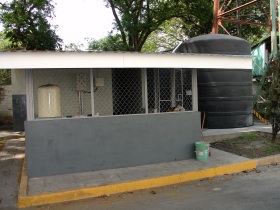 In the majority of cases, water contamination is of the inorganic type, originating from dissolved salts at its source. Said salts
are composed of cations and anions, such as iron, manganese, boron, calcium and arsenic, among others.
In the majority of cases, water contamination is of the inorganic type, originating from dissolved salts at its source. Said salts
are composed of cations and anions, such as iron, manganese, boron, calcium and arsenic, among others.
The maximum concentration of these elements is regulated according to international standards. Water for human consumption must abide by these standards to be
considered potable and safe.
Various techniques exist to eliminate the mineral excesses from water, such as ion exchange resins, reverse osmosis, coagulation/flocculation
processes, and filtration, and more. Their usage, either independently or in a combined manner, allows for the normalization of the treated water.
At Sucrocentro we have a wealth of knowledge about these purification procedures, and we apply them appropriately to treat both high and
low volumes of water, in a manual or automatic fashion.
Very frequently, mineral contamination is accompanied by microbial contamination. Only after eliminating the high
mineral concentrations, should we proceed to eliminate micro-organisms, making use of specific techniques, such as the addition of chlorine, ozonation, or the use of
UV lamps.
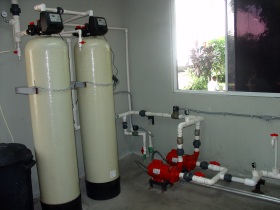 The following link shows a certification on behalf of Holcim El Salvador, in which it expresses its satisfaction for our design of the water purification plant
for Metapán, which will supply the city with 11,500 cubic meters per day of water, free of iron and manganese.
The following link shows a certification on behalf of Holcim El Salvador, in which it expresses its satisfaction for our design of the water purification plant
for Metapán, which will supply the city with 11,500 cubic meters per day of water, free of iron and manganese.
The following link leads to a video of the installation of a HidroPur SED Inorganic System at Tecoluca, located at the zone below the lower Lempa River in El Salvador, to remove
iron, manganese y micro-organisms from a volume of water. This plant operates in a semi-continuous manner and has a processing capacity of 30 cubic meters of water per day. (External Youtube link.)